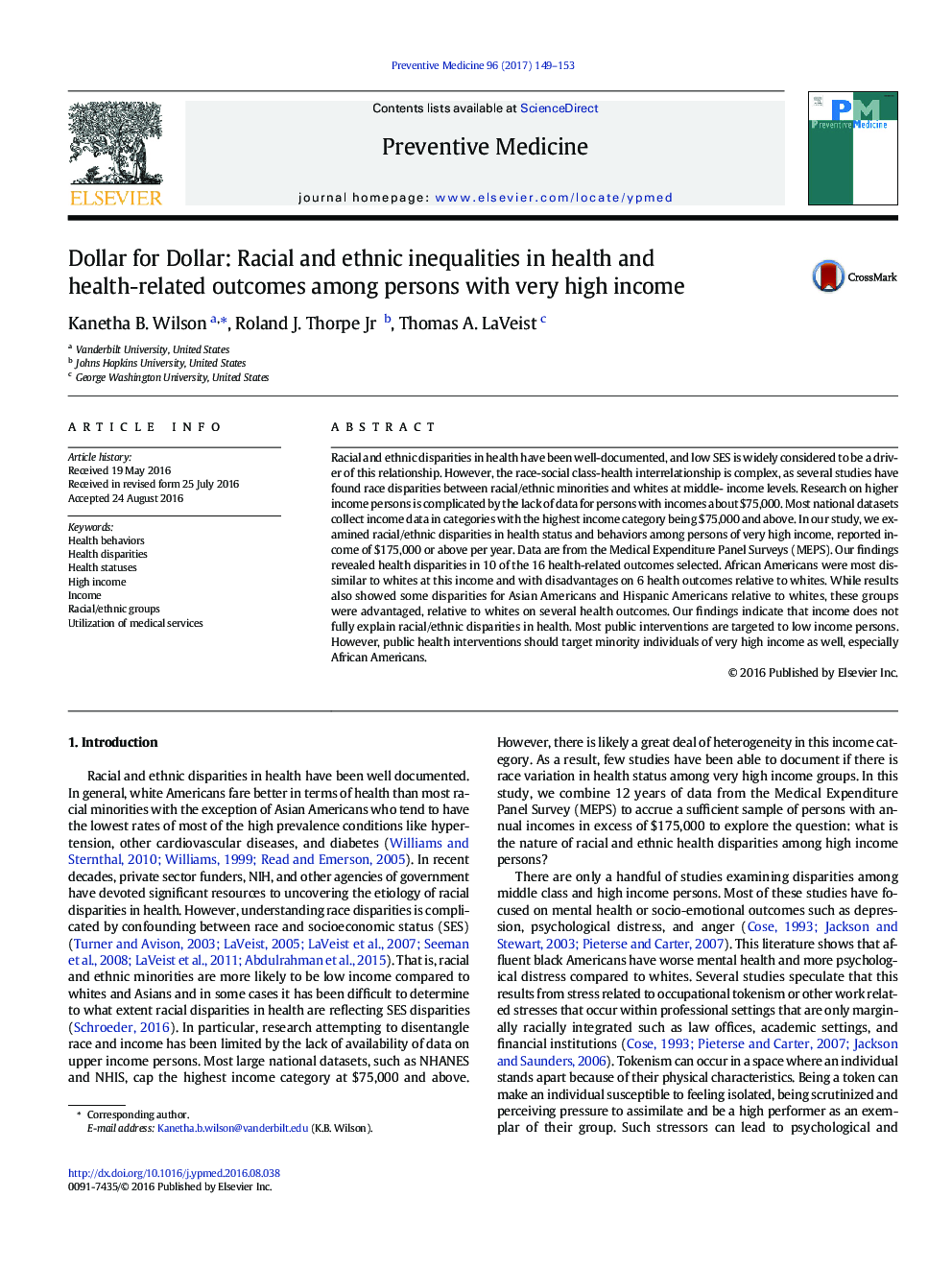| کد مقاله | کد نشریه | سال انتشار | مقاله انگلیسی | نسخه تمام متن |
|---|---|---|---|---|
| 5635723 | 1581618 | 2017 | 5 صفحه PDF | دانلود رایگان |
- Racial and ethnic disparities exist among high income persons who make $175,000 or more.
- Racial and ethnic disparities exist in 10 of the 15 outcomes selected.
- Black Americans fare the worst in comparison to whites than other racial and ethnic groups.
Racial and ethnic disparities in health have been well-documented, and low SES is widely considered to be a driver of this relationship. However, the race-social class-health interrelationship is complex, as several studies have found race disparities between racial/ethnic minorities and whites at middle- income levels. Research on higher income persons is complicated by the lack of data for persons with incomes about $75,000. Most national datasets collect income data in categories with the highest income category being $75,000 and above. In our study, we examined racial/ethnic disparities in health status and behaviors among persons of very high income, reported income of $175,000 or above per year. Data are from the Medical Expenditure Panel Surveys (MEPS). Our findings revealed health disparities in 10 of the 16 health-related outcomes selected. African Americans were most dissimilar to whites at this income and with disadvantages on 6 health outcomes relative to whites. While results also showed some disparities for Asian Americans and Hispanic Americans relative to whites, these groups were advantaged, relative to whites on several health outcomes. Our findings indicate that income does not fully explain racial/ethnic disparities in health. Most public interventions are targeted to low income persons. However, public health interventions should target minority individuals of very high income as well, especially African Americans.
Journal: Preventive Medicine - Volume 96, March 2017, Pages 149-153
